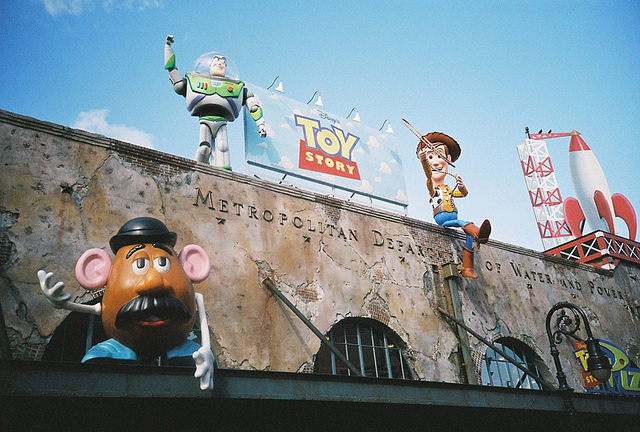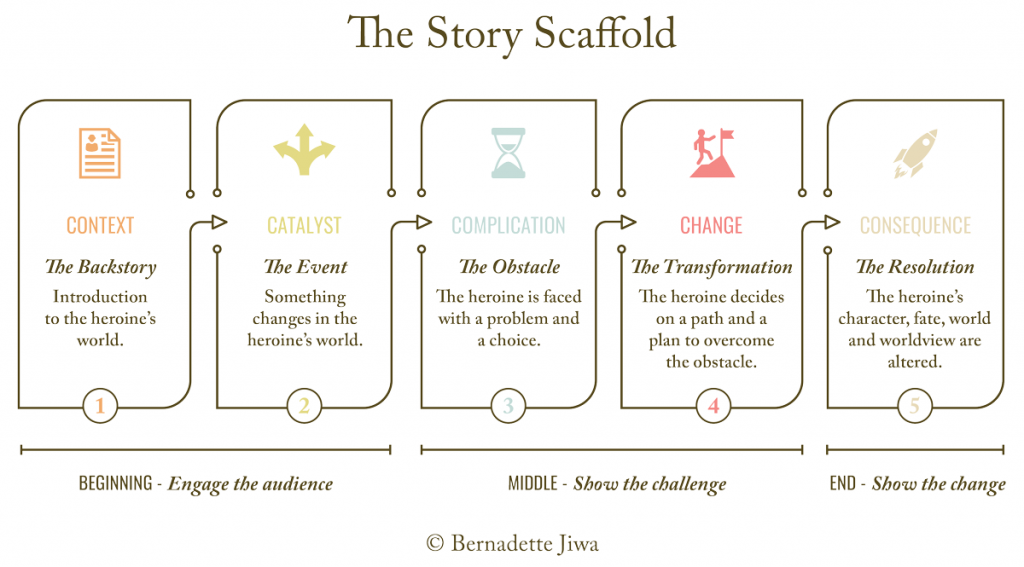Unlock the Magic in Your Story Now
Get the Free 20 questions to Ask Before Launching Your Idea workbook when you sign up for occasional updates.
Get the Free 20 questions to Ask Before Launching Your Idea workbook when you sign up for occasional updates.
Fact Or Fiction?
filed in Marketing, Storytelling, Strategy

The bookstore in Albert Park had just opened when Thomas, dressed as Batman, and his mum walked in. They headed straight to the children’s section at the back. They were shopping for a present for Ben, who was having a superhero birthday party that afternoon.
‘Let’s get Ben this book about Brazil. Then he can learn all about the people in Brazil,’ Mum said.
‘No! I want to get him a book about Batman,’ Thomas shot back, bottom lip out and cape askew.
In the end, they bought both books, but you can guess which one Ben loved.
It’s obvious that Thomas will be the best judge of what Ben likes. But his mum still has an opinion, based on her assumption about what’s better for Ben in the long run.
We sometimes make assumptions based on our opinions about a customer’s wants and needs. It’s hard to be objective about our ideas when we are invested in the outcome. But that shouldn’t stop us trying to stand in our customer’s shoes for long enough to understand how he feels. Our opinion is immaterial if it doesn’t align with the story the customer believes.
Image by Jonnie Anderson
Share this article
When Did One Day Become Never?

The first time I met Simon he was juggling four dirty plates while greeting customers and directing his team. Over time, I came to know Simon as a friend and also as one of the most gifted people I knew. Simon’s bosses loved how he ran their cafe as if it were his own. They loved how he made their customers feel so welcome that they kept coming back. And they loved how their business was growing under his caring leadership. They just didn’t show it.
Simon loved his customers, but he hated the feeling of not being valued by his employers, and besides, he had a dream. At the weekend Simon had a side gig. He became a personal chef and dinner party host for hire. His clients went out for the day leaving him in to cook the meal and style their home before their guests arrived in the evening. Nothing gave Simon more satisfaction than seeing the look on someone’s face when they came home looking relaxed to an exquisite meal in the beautiful setting he’d created.
Simon wanted to do this work full-time. He dreamt of starting his own business one day. He could see how his service would work for dinner parties, small celebrations and family gatherings. He had everything he needed to begin and clients who were ready to recommend him at the drop of a hat.
Simon spent hours that next year talking about his business ideas. He worked on everything from the name to the launch strategy and service descriptions. That was fifteen years ago. I’d love to tell you that Simon got his business up and running and that it’s succeeded beyond even his wildest dreams but I can’t. You see, he never did find the courage to leave his old job. He never started. He’s still working in the cafe where we met. The only thing that’s changed is that he’s stopped talking about how everything is going to be different one day when he gets around to doing the thing he really wants to do.
Too many people not only never make the leap—they never even take the first step. Often what’s holding them back is the clarity, confidence and support they need to change direction. ‘One day’ becomes never when we fail to take the first step.
I’ve been helping people and companies to find and tell the story that sets them apart for more than a decade. And now, along with my friend and colleague, Mark Dyck, I’m helping more of those people who have a story to tell to find the people like them who can support them on their journey, in the Right Company. We’re opening our business community to a handful of new members this week. You can apply to join here. Simon might believe it’s too late for him. It’s not too late for you.
Image by Garry Knight
Share this article
How Much Runway Do You Need?

An aircraft must reach sufficient speed to take off. The pilot needs enough runway to achieve that optimum speed. The same is true of our projects and ideas. Velocity alone is not enough to make an idea fly. Ideas also need time.
We often focus our energy on gathering speed and creating momentum, while forgetting the importance of allowing ourselves enough runway. How much runway does your idea need?
Image by Björn
Share this article
Pitch Perfect
filed in Marketing, Story Skills, Strategy

The two falafel makers at the weekend market sell an almost identical product but achieve very different levels of success. The marketing tactics they use are similar. Make eye contact with potential customers, offer them a small sample to try and use the time they’re chewing to launch into your sales pitch.
The first maker tells passers-by his falafel are the best in the world. ‘I should know, I make them,’ he proclaims.
The second tells potential customers that her falafel are vegan, dairy and gluten free. ‘They are delicious hot or cold. Wrap them in pitta bread with some salad and hummus, and you’ve got an easy, tasty and healthy lunch,’ she says, as customers line up to hand her their ten dollar notes.
We spend days, months and sometimes years perfecting our product recipe. We should honour that devotion to creating something that matters by perfecting our sales script too. If you want to make something matter, you must be able to tell the people you want to serve why it should matter to them.
Image by Stijn Nieuwendijk
Share this article
The Brand Awareness Conundrum
filed in Marketing, Storytelling, Strategy

Every few months another new restaurant on Bourke Street closes its doors for the last time. Sometimes it’s like watching a car crash happening in slow motion right in front of your eyes. The events leading up to the closure follow a familiar pattern.
There’s the launch day fanfare, accompanied by balloons, the menu reveal and opening offers. The staff member stationed out front hands out leaflets to the hundreds of passers-by trying to entice them in. Many put their head around the restaurant door. Most don’t go inside. A few promise to come back but never do. The sandwich board on the pavement advertising discounted ‘specials’ get bigger and brighter as the days turn into weeks, then months, where too few lunches have been served. Those adverts are a sure sign that the lease won’t be renewed.
Bourke Street is one of the busiest streets in the heart of Melbourne—a place thousands of potential customers walk up and down each day. But setting up shop there does not guarantee that the right customers will come and keep coming. We have come to believe that being known is the key to being successful. That’s not always the case. The people and companies that succeed are not just visible to everyone—they’re resonant with the particular group of people that they have optimised their business to serve.
Back to Bourke Street. There’s a new restaurant that’s quickly become a favourite with busy office workers and weekend shoppers, looking for a quick pit stop and a healthy bite to eat. The first thing the owners did was to design the entrance with empathy. They didn’t want people to feel intimidated to step over the threshold. They wanted to avoid people feeling that they had to commit to sitting down if they walked in—which they believed would stop them coming in at all. They removed the door and left the restaurant completely open to the street. They’re giving people the opportunity to see straight away if this is their kind of place.
Being known by everyone isn’t going to get us to where we want to go. Being right for the right people is where we start. And understanding how to show and tell those customers that we’re right for them is the way we build a sustainable, successful business. We don’t need to find more ways to make everyone see us. We need to find more ways to make the right people sure of us.
Image by Garry Knight
Share this article
Do You Have A Customer Awareness Strategy?
filed in Marketing, Storytelling, Strategy

The Friday evening tram was jam-packed with commuters, our bodies so closely pressed together you could feel the heat from the passenger standing next to you. As the tram made its way up Collins Street, the people travelling alone avoided eye contact. Two women next to me were chatting about the black jacket the younger one was wearing.
She mentioned the brand name and the store where she’d bought it, then went on to describe why it was ‘worth the investment’. ‘I’m a junior lawyer. I work long hours. I always feel put together when I’m wearing this jacket, even when I’m leaving the office after a twelve-hour-day.’ Sold.
If only the brand’s designer and marketing team had been there to overhear the conversation.
Of course, it’s not always possible to be in the room or on the tram, when our customers have something valuable to share. But it is possible to create a mechanism for hearing and acting on what they tell us. The stories our customers tell—the words they use and the feelings they express are part of our story. We should know and use them. What’s your customer awareness strategy?
Image by Matthew Henry
Share this article
Why Do Customers Choose You?
filed in Marketing, News, Story Skills, Storytelling, Strategy

What are the top three reasons customers choose you? What story are you giving those customers to tell—not just to recommend you, but to trust and value, prefer and remain loyal to you or your company?
You can make assumptions and best guesses about what’s motivating the people you serve, or you can ask for reasons they will happily share. The stories your customers tell themselves are part of the story you need to tell.
Image by Garry Knight
Share this article
How To Tell A Story Using The Story Scaffold
filed in Marketing, Story Skills, Storytelling

There’s no question that stories are the best way to engage and persuade people. We have good scientific evidence to prove it. According to neuroeconomist, Professor Paul Zak, ‘Narratives that cause us to pay attention and also involve us emotionally are the stories that move us to action.’ It’s our very makeup, our physiology, that enables us to empathise and to be persuaded by stories. This physiological connection between head and heart is the reason stories work.
Zak goes on to say, ‘Stories that are personal and emotionally compelling engage more of the brain, and thus are better remembered than simply stating a set of facts.’ All compelling stories follow a simple three-act structure, with a beginning, where the scene is set. A middle where something happens. And an ending where we find out what happens as a result of what happened. The sequence of events—what we reveal to the audience, when, is what makes stories work. The goal is to keep the audience wondering what’s going to happen next all the way to the end. When you can’t put a book down, it’s because the author nailed the story structure. The author’s goal is to keep you turning the pages.
Philosophers and scholars like Aristotle, Freytag and Campbell, analysed dramatic structure and gave us story formulas like the hero’s journey to help us become better storytellers. Every successful movie follows these formulas. But they are overly complex for stories we tell every day.
At its simplest, the sequence of events in a story happens in five stages.

The 5C’s of The Story Scaffold
1. CONTEXT
The Backstory
Introduction to the hero’s or heroine’s world.
2. CATALYST
The Event
Something changes in the hero’s or heroine’s world.
3. COMPLICATION
The Obstacle
The hero or heroine is faced with a problem and a choice.
4. CHANGE
The Transformation
The hero or heroine decides on a path and a plan to overcome the obstacle.
5. CONSEQUENCE
The Resolution
The hero’s or heroine’s character, fate, world and worldview are altered.
You can test this structure by mapping it onto any memorable story from Cinderella to Toy Story. Think about what happens in Toy Story when Woody, Andy’s favourite toy is confronted with the arrival of Buzz Lightyear and how he changes throughout the story as a result.
You can use The Story Scaffold to become a better storyteller, not only when you’re marketing but in everyday conversations. Sometimes you will be the hero of the story. But more often when you write persuasive sales and marketing copy, pitch a winning presentation or create great customer experiences, it’s the customer’s or client’s story you’re telling.
Storytelling isn’t just the best way to be seen and heard in a meeting or on a stage. It’s how we engage with people every day by showing that we see them.
If you’d like to practice using The Story Scaffold to tell better stories, consider The Story Skills Workshop.
Image by Carmelody
Share this article
Signalling
filed in Marketing, Story Skills, Storytelling

According to the Collins English Dictionary, a signal ‘is a gesture, sound, or action which is intended to give a particular message to the person who sees or hears it.’
We are sending signals to our clients and customers whenever they come into contact with our business or brand—even when we’re not face-to-face. Words, images, dress, titles, tone, body language, location, prices, packaging, decor and design give people clues about who we are, what we stand for and what we’re worth. The flipside is that when we allocate resources, we’re also sending a signal to ourselves about what we’re worthy of.
Customers are making decisions based on our signals, so it pays to be intentional about every signal we send. When I get an email, like the one I got yesterday from an insurance company assuring me that my query is important to them ‘and will be replied to within three business days,’ I’m forming an opinion about what it would be like to be a paying customer with an urgent request.
Of course, in the days of online customer reviews, we can’t always control the message—which is all the more reason to make sure that the story we tell when we can is sending the signal we intended to send.
Image by Garry Knight
